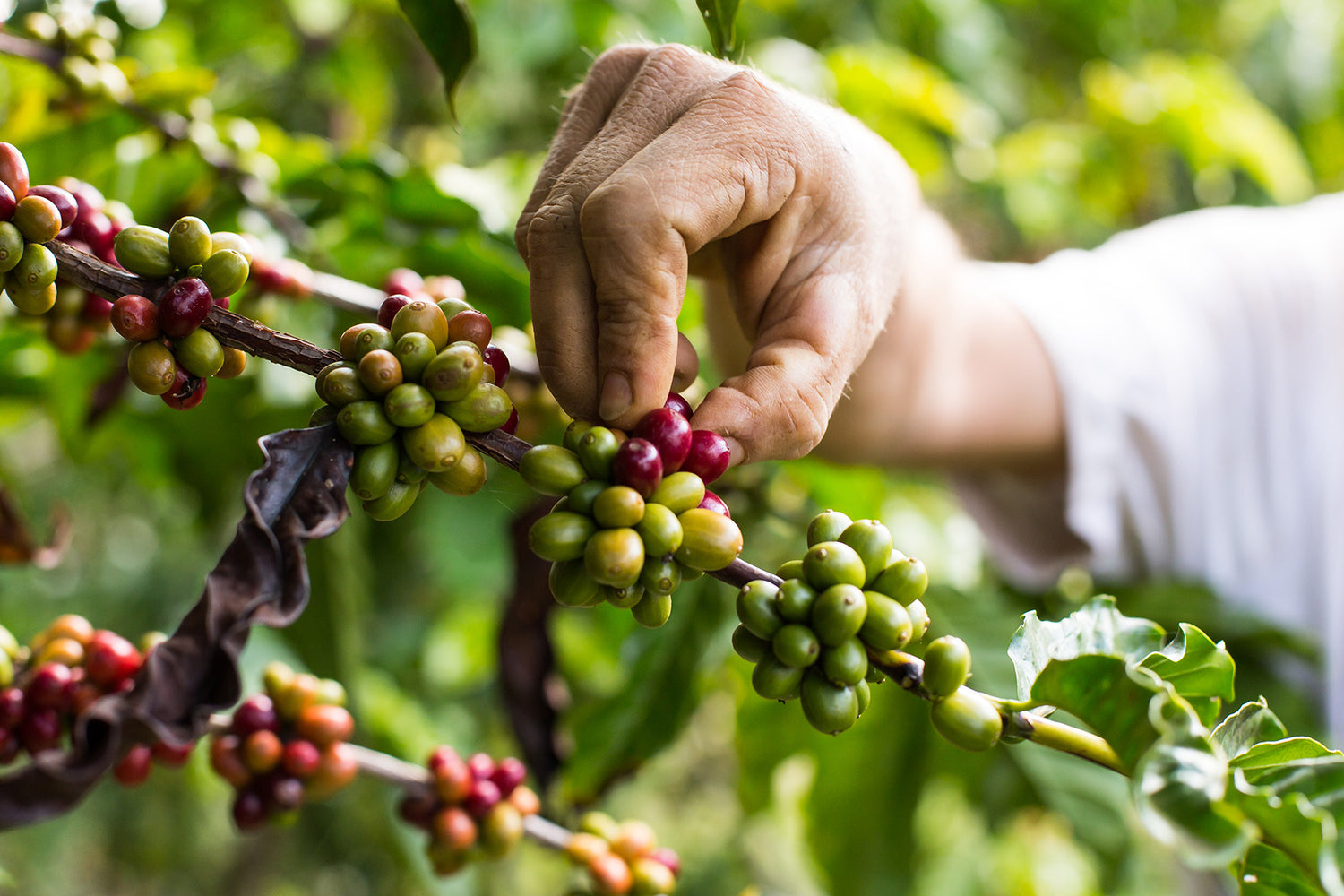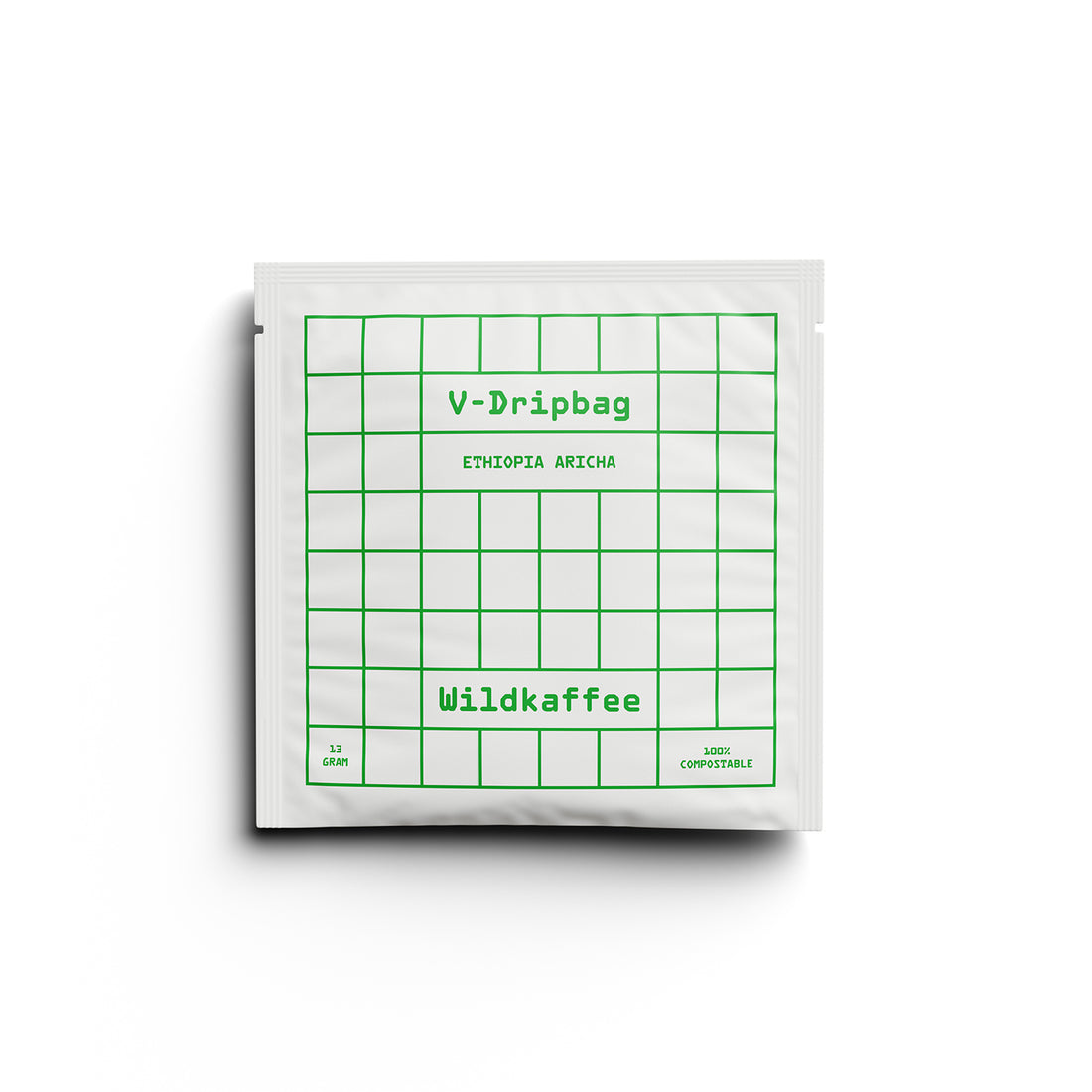Wild coffee varieties vs. new coffee varieties: taste, resilience and cultivation
Overview: Wild coffee varieties and new breeds at a glance
Wild coffee varieties represent native, genetically diverse populations – often found in the forests of Ethiopia , South Sudan, or Yemen. In contrast, new coffee varieties from breeding and selection specifically combine characteristics such as yield, resilience, and a specific cup profile. For specialty coffee fans, the question arises: What are the differences in taste, resilience, and cultivation practices – and what does this mean when purchasing?
- Wild coffee varieties: broad genetic base, often complex aromas, but fluctuating yields and higher cultivation risks
- New coffee varieties: selectively bred lines and F1 hybrids; stable yields, often resistant coffee varieties, but sometimes fewer aromatic surprises – exceptions included
- Relevance: Climate change in coffee, disease pressure (Roya/Leaf Rust, CBD) and tight margins force producers to make differentiated decisions
What are wild and heirloom varieties?
In the specialty coffee scene, "wild coffee varieties" describe natural, undomesticated populations growing in native forests. Heirloom coffee, on the other hand, refers to locally preserved, traditional Arabica varieties that have adapted to microclimate, soil, and cultivation over generations—often originating from wild populations but selected by farmers.
While heirloom coffees like Typica Bourbon are close to the early domestication history, wild coffee varieties , typical of Ethiopia, are significantly more diverse. This genetic diversity provides a safety net against environmental stress and is a source of new breeds.
Origin, gene pool and typical examples (Ethiopia, South Sudan, Yemen)
- Ethiopia : Hotspot of genetically diverse coffee (Arabica). Forest coffee and semi-wild material exhibit an enormous range of floral, citrus, and spicy notes.
- South Sudan: Home to rare Coffea populations relevant for resilience research
- Yemen: Old heirlooms selected over centuries, which develop distinctive profiles (dried fruits, spices) in the terroir of dry highlands

How are new coffee varieties created? Breeding, selection, F1 hybrids
New coffee varieties are created through crossbreeding, selection, and field trials. Breeding goals are usually stable yields, resistance to disease and drought stress, and a convincing sensory profile. F1 hybrids combine genetic lines to exploit heterosis effects (vigor, uniformity). Parallel programs are working on Robusta varieties and interspecific approaches.
Terms in brief:
- Selection: Selection of plants with desired characteristics over several generations
- Crossing: Targeted combination of two lines to combine properties
- F1 hybrids: First branch generation; often vigorous plants, sometimes highly homogeneous. Often marketed as F1 hybrid coffee.
Advantages and disadvantages: yield, resilience, cup profile
- Advantages: higher productivity, more predictable maturity, better resistance to Roya (coffee rust), some lines tolerate heat/dry periods; thus lower production risk
- Disadvantages: Seed and planting costs, licensing issues, sometimes less variety in the cup profile; not every line shines in high-altitude terroirs
- Cup profile: Modern lines range from clear-sweet and chocolatey-nutty to fruity-complex – top results are possible if the location and preparation are right
Taste comparison: sensory profiles and brewing recommendations
Wild coffee varieties and heirlooms often exhibit nuances of floral notes (jasmine, bergamot), bright citrus, stone fruit, and complex herbal tones. New coffee varieties often boast clean sweetness, chocolate, nuttiness, ripe fruit, and a clear structure—ideal for consistent quality in everyday coffees and for espresso .
- Filter (V60, Kalita, Batch) : For wild coffees and Gesha varieties, lower TDS focus, fine grind, moderate agitation; 92–94 °C, 1:15–1:16
- Espresso : Newer lines with high sweetness tolerate 92–94 °C and a longer ratio (1:2.2 to 1:2.5). Heirloom or Typica Bourbon profiles benefit from a slightly higher temperature and gentle extraction.
- Immersion (French Press, Cupping): Ideal for comparing profiles of both groups, as clarity vs. complexity becomes clearly visible
Tip: Compare seasonally and blindly. Vintage, processing, and roasting influence the results at least as much as the variety.

Climate and disease resistance: current status and ongoing research
Climate change is putting coffee under pressure: rising temperatures, irregular rainfall, and pest pressure. Resistant coffee varieties and F1 hybrids can provide stability. At the same time, institutes are evaluating interspecific crosses (e.g., with Canephora/Robusta) and utilizing material from collections of coffee genetic material to integrate tolerances to drought, CBD (coffee berry disease), and roya (coffee rust).
- Arabica varieties: Breeding combines resilience with quality; altitude and shade management remain crucial
- Robusta varieties: Show natural heat tolerance; with a focus on quality, they are increasingly being used in specialty blends and single origins
- Research: Long-term trials in East Africa and Central America test yield stability, sensory perception and adaptability to new altitude windows
Cultivation practice: effort, yields and risks in everyday farm life
For producers, operating costs, risk, and market opportunities matter. Wild coffee plantations often require biodiversity-friendly systems (agroforestry, shade trees) and careful management; yield fluctuations are possible. New coffee varieties reduce production risk but require reliable planting material, training, and often investments in plant density, nutrient, and water regimes.
- Labor: Wild coffee varieties require selective harvesting and precise processing; new lines often offer uniform ripeness
- Costs: Seedlings, training and possible licenses vs. potentially higher yield
- Risk management: Mixed plantings (old + new) spread risks and ensure genetic diversity
Where are old vs. new varieties cultivated? Regions and projects
Geographically, the picture is diverse: traditional heirlooms dominate the highlands of Ethiopia and Yemen. New varieties are spreading rapidly in Brazil , Central America, and in pilot projects in East Africa and Asia – driven by disease pressure and market demands.
Examples: Ethiopia/Yemen (old), Brazil/Central America/East Africa (new)
- Ethiopia /Yemen: Heirloom and wild coffee varieties are typically Ethiopian; forests and terraced fields provide iconic profiles
- Brazil : New lines for efficiency, drought tolerance and mechanical harvesting; consistent quality for espresso and blends
- Central America: After Roya shocks, farms rely on resistant varieties and F1 hybrids; quality programs secure premium prices
- East Africa: Combines research plots with conservation cultivation; focus on coffee genetic diversity and sensory excellence

Seasonality and purchasing: harvest windows, availability, vintage effects
Coffee harvest times vary by hemisphere, altitude, and climate. Fresh lots typically reach the market 2–4 months after harvest, depending on the rest period (reposo) and shipping.
- Ethiopia : Harvest Nov–Jan, arrival in Europe often spring/summer
- Central America: Harvest Dec–Mar, availability late spring to summer
- Brazil : Harvest May–Sep, arrival summer/autumn
Vintage effects: Rainfall patterns, flowering windows, and processing influence density, acidity, and sweetness. Heirloom coffees fluctuate more, while new coffee varieties tend to perform more consistently – good roast profiles make all the difference.
Sustainability and Biodiversity: Conservation of Wild Coffee Varieties in Practice
Wild varieties secure the future of coffee cultivation. Their protection is achieved through forest conservation, agroforestry systems, participatory breeding, and collaboration with gene banks. Fairly compensated supply chains create incentives to maintain complex, lower-risk ecosystems.
- In-situ protection: preservation of natural resources, reduced deforestation, promotion of shade trees
- Ex-situ protection: collections in coffee gene bank networks, regulated access for research and breeding
- Economic levers: differentiated payment for biodiversity services, long-term contracts, transparent traceability
Buying advice for specialty coffee: labels, transparency, traceability
Clear information is crucial for informed purchases: variety(s), farm/cooperative, height, processing, harvest year, lot size. Focus on transparency , not buzzwords.
- Variety information: Arabica varieties such as Typica, Bourbon, Gesha, SL/Catuaí/Caturra lines, F1 hybrids – ideally with brief context information
- Project relevance: Forest protection, agroforestry, research cooperation and quality premiums are plus points
- Sensory: Tasting notes, roast level and brew recommendations should be comprehensible and reproducible
- Traceability: Lots with clear origin and year information facilitate comparison from year to year
Current developments 2025: resistant lines, breeding programs, news
- Resistance stacking: Combining multiple resistance genes against Roya and CBD in new lines
- Heat and drought tolerance: selection for later flowering, deeper root systems and more efficient stomatal regulation
- Sensory focus: F1 hybrids with floral and fruity profiles are increasingly appearing in competitions
- Robusta quality: Improved processing highlights single-origin potential and diversifies specialty offerings
- Farm practice: Mixed plantings of heirlooms and new varieties as a standard strategy against climate risks
Further steps: Taste heirloom and new coffee varieties from the same region in parallel, document your recipe and sensory analysis, and read breeding updates from research institutes or producer associations. This will help you grow your understanding of variety selection, terroir, and vintage.




